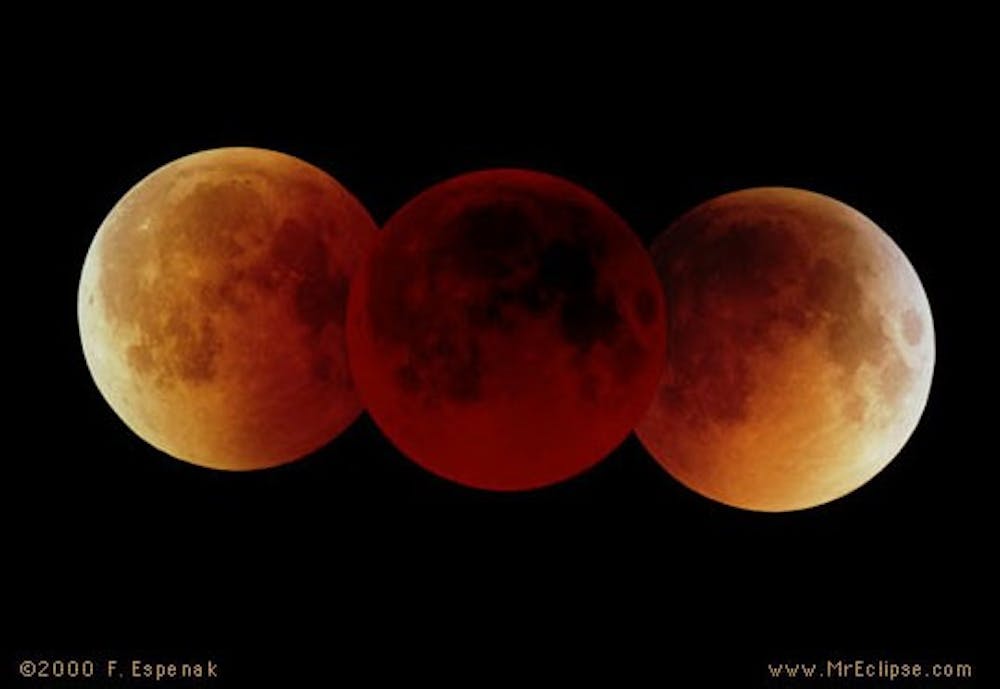The worst that the first of fabled Four Blood Moons, a series of four lunar eclipses in two years, will likely bring Athens Tuesday is a cloudy sky.
This will be the first of two total lunar eclipses this year, and four until the end of 2015. These eclipses — which will be separated by six-month intervals — are known as a tetrad, something that will happen only 9 times in the 21st century, according to NASA.
The other eclipses in the tetrad will occur on Oct. 8 this year and will occur April 4 and Sept. 28 in 2015.
But star-gazers may not get to see the eclipse if weather conditions pan out the way the are expected.
“It’s not looking real good,” says Tom Kines, senior meteorologist at AccuWeather. “Some things will change, but right now, we see lots of clouds around Monday night, maybe even some rain.”
But if the weather does clear up, “The moon will rise full that evening around sunset. Sometime around midnight or so a portion of the moon will begin to darken,” said Thomas J. O’Grady, a part-time astronomy assistant. “It could eventually disappear in a clear sky, or, more likely, it will take on a deep reddish or coppery hue.”
The reason the moon sometimes takes a red color during a lunar eclipse is because short wavelengths of light passing through the Earth’s atmosphere gets dispersed and shorter wavelengths, such as red, are able to pass through and shine on to the moon’s surface, O’Grady said.
A lunar eclipse is an infrequent phenomenon that occurs when the moon, in its orbit around the Earth, passes through the Earth’s shadow. Such an event can only occur at a full moon.
“The plane of the moon’s orbit around the Earth is tilted about 5 degrees from the plane of the Earth’s orbit around the sun,” O’Grady said. “If the planes were exactly the same, instead of 5 degrees different, we would have an eclipse of the moon every month and two weeks after the monthly lunar eclipse, we would experience a solar eclipse on Earth.
There were a couple of partial lunar eclipses in 2013 but no total lunar eclipse, O’Grady said. “The last total eclipse of the moon was in December of 2010, but you had to be on the other side of the Earth to see it,” he said.
The upcoming lunar eclipse will occur in the Athens area very late at night, and if it is a clear evening, it should be visible overhead about anywhere, but that dark places like Radar Hill and Athens Asylum would be best for viewing the moon, O’Grady said.
@_suhyeonpark
sp317712@ohiou.edu






